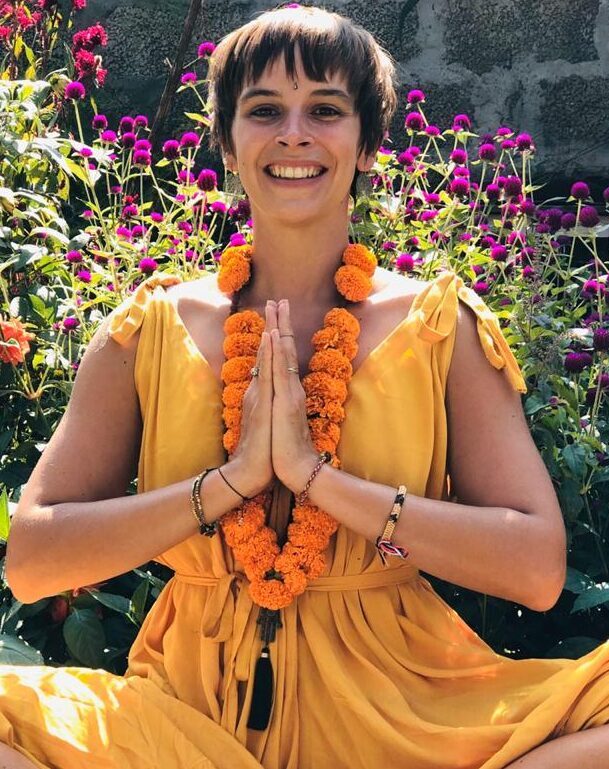A range of numerous breathing techniques in yoga helps you to stay healthy and lead a peaceful life. Right from reducing the stress level, to boosting the metabolism and immunity, and balancing the level of hormones in the body the pranayamas like Nadi Sodhan and Anulom Vilom is the most practiced and basic breathing techniques in ancient yoga.
With numerous techniques of Pranayama and meditation, it is easy to control your mind and take your spirituality to the next level. The two breathing techniques are taught in Yoga teacher training in Rishikesh.
What is Nadi Sodhan?
Nadi Sodhan is a type of breathing technique in yoga. The literal meaning of Nadi means subtle energy channels, and Shodhan means cleaning or purification. According to ancient yoga, there are Nadis called subtle energy channels in the human body, which gets blocked due to various reasons. With the help of the Nadi Shodhan Pranayama technique, it helps to clear blocked energy channels.


Causes of Blockage in the Nadis
(1.) The Nadis in the body gets blocked due to stress.
(2.) Toxins in the body lead to blockage in the body.
(3.) Nadis also get blocked due to physical and mental trauma or due to an unhealthy lifestyle.
What is Anulom Vilom?
It is also known as an alternate nostril breathing exercise. The practice of Pranayama involves inhalation and exhalation. The duration of inhalation and expiration completely depends on the capacity of the practitioners. In the beginning phase, it can start with 2 seconds and can be increased up to 20 seconds. It is an advanced practice done without the retention of breath. To command this, it is very necessary to learn this pranayama under the guidance of expert yoga teachers. Anulom Vilom is a breathing technique for respiratory problems and asthma.
With the practice of Anulom Vilom, it helps to facilitate proper lung functioning, mitigates the stress, and lifts your mood to keep you away from stress. There’s no doubt about the fact that Anulom Vilom is the most suitable pranayama for all. The ideal breathing technique helps you to maintain heart health. Apart from this, it helps you to improve the immune system so that it is easy to fight with general issues like cough and cold. This is the best for yoga beginners who want to command their breath and live a life full of peace


What is the Difference between Nadi Sodhan and Anulom Vilom Pranayama?
In Anulom Vilom, there is no need to hold the breath, whereas, in Nadi Sodhan, one needs to hold the breath inside for as long as possible.You can start with the practice of 2 second Inhale,5 second retention and 8 second exhalation.
In Anulom Vilom air is inhaled from left nostrils and exhaled from the right one, after that it is inhaled from the right nostril and exhaled from the left one.
In Nadi Shodhan, the air is inhaled from left nostrils hold the breath and exhaled from the right one. The second time the air is inhaled from the right nostril holds the breath and exhale from the left one.
Our both the Nostrils are connected to anti directional area of Brain.When you Inhale from left, you try to supply energy to awaken right side of mind. and when you take breath (Prana) from right nostril, you try to awaken the left side of Brain.
The Bottom Lines
These two pranayamas are best for those who want to lead a better life. Regular practice will help you to control your breath as well as raise your spirituality level. The two can easily be learned under expert guidance.
Want to test yourself if have any respiratory symptoms, Watch the video and try deep breathing Pranayama to check if you are dealing with any breathing issues.
https://www.youtube.com/watch?v=m6JzADLpCWg&t=145s
Join our Online Pranayama course to lead a better Pranic life and assist your body for healthy lifestyle.Read more about our 10 Day Online Pranayama Course
Online Pranayama Course – Training just at $100 Per Week for Beginner. US$ 150 for Intermediate.
Please like our Facebook Page
Contact us for details! Call us on whats app at +91-7428412108 for foreign nationals and Indian nationals. For queries write to us on mantrayogmeditation@gmail.com and namaskar@mantrayogameditation.org



In the description for anulom vilom, you have mention it is an advanced practice that is done with retention of breath. So you can hold the breath in this practice between the inhale and exhale? And if that’s the case, is it still difference from Nadi Shodhana?
Dear Aditi,
Thank you for highlights and assistance, there was a mistake in a complete word.. It was corrected now. It should be without holding the breath.
Having spent time in ashrams in Rishikesh my understanding is that Nadi Shodhana does not involve holding the breath. Would you please clarify.
Dear Bernard,
Greetings of the Day!
Nadi Sodhan is a process of the purification of Nadis chi or Meridians.And when you are transforming the Prana from one side to other side.
The Alternate breathing need Hold. Retention. In Anulom Vilom It is not required to hold the breathing when transforming to one side to other.
my understanding is that, Anulom Vilom is A systematic practice of inhalation and exelation through both nostrils and Nadi Shuddhi is a practice of alternate nostril breathing.
Please clarify
Dear Sherin,
Greetings of the Day!
If you are just taking breath from both the Nostril. It is same like general breathing or deep breathing or simple respiration practice. Already answered the clear
difference between Anulom Vilom and Nadi Sodhan.
Thank You!
In Nadi shodhan , you have mentioned that you inhale 2 secs, retain 5 secs , exhale 8 secs . What is the time gap between exhaling and inhaling once again ? Is it immediately or is there a time gap
Namaste,
In Nadi Sodhan we do not emphasis on External Kumbhaka ( Retention). Means we Only work though Internal Retention. Means yes, the 1 to 2 secs avg automatically will be applied during practice. You need not to focus on it.
Puraka – Inhale
Antaranga Kumbhaka ( Retention)
Rechaka – Exhale
Bahiranga Kumbhaka – ( Shunyaka)
applied in a complete cycle.
Thank you
Hi
Most sites talk about pranayama as inhaling in one nostril and exhaling through the other. But in Sadhguru version there is inhaling and exhaling through the same nostril. Could you perhaps give your opinion about the difference?
Dear Claudia,
Greetings!
Thank you for sharing your side. It is wonderful question to answer. Note that it is misconception that you can do breathing exercises from Mouth or reverse Nose.
What you have mentioned about taking breath from Left or Right Nostril and Exhale too. When we do One Nose Bhastrika, Chiri Kriya or Breath of Fire. Apply same nose
for Inhale and Exhale. Sometime one and Sometime both. Same way, in some practices of Pranayama like Kaki,Sitali, Sitkari, Palvani we apply Mouth for Inhale and Nose to exhale.
Read more in our other blogs and visit – Online Pranayama Page ( Online Pranayama Course )
Thank you and Best wishes for Learning Pranayama.
Mera question h . Ki Anulom vilom aur , me breath ko hold nhi krna . Bs lena aur chodna h ,…
aur nadishodhan me breath hold karni h inhale krne k baad toh inka benifit kya hoga Alag .. …
Hello ,
So Can I incorporate both Nadi shodan and anolum vilom as part of the pranayama routine ?
Dear Manyava,
Yes, You certainly can. Both are going to give you shooting experience.
Hi, thanks for sharing Amazing info about 2 pranayam…
Thank you for this. It’s interesting because every other reference I have read and school I have learned from is the opposite of this. Nadi Sodhan does not have retention and Anulom Vilom does. In both, I have always read we inhale left, exhale right, inhale right, exhale left, repeat. The difference between the two is that with Anulom Vilom, we retain our breath with each inhale. With Nadi Sodhan, we do not retain the breath. Thank you for sharing your perspective on this.